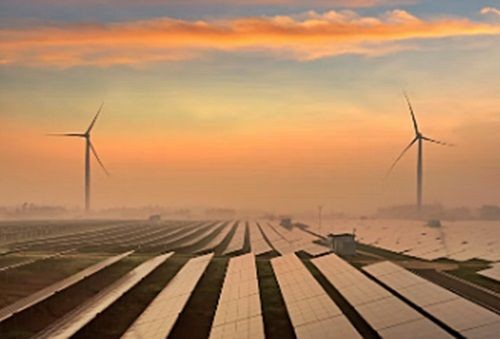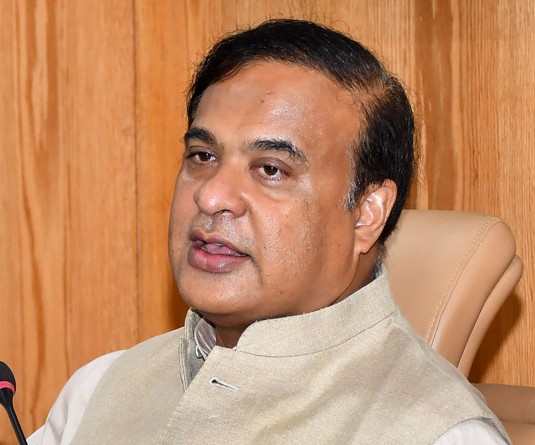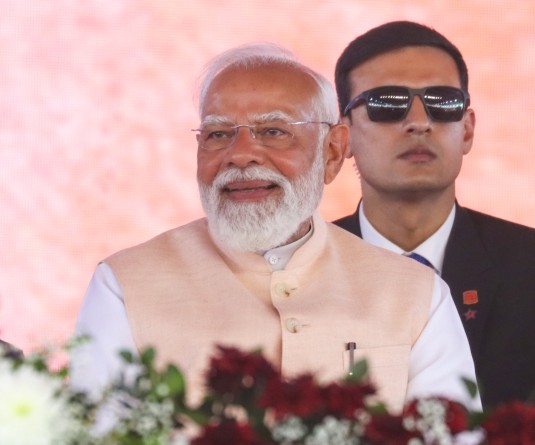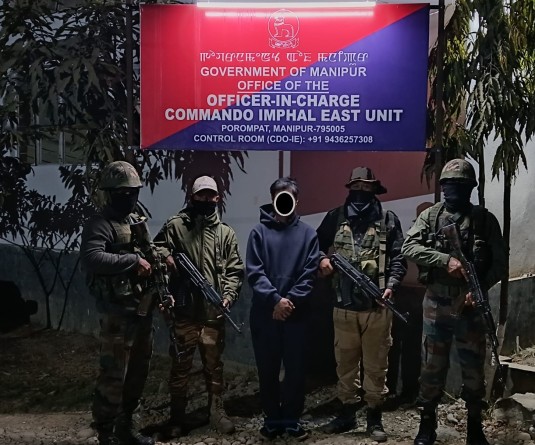IANS Photo

Agartala, February 3 (IANS) The northeast, according to an official study, has a renewable energy potential estimated at 1,28,962 MW, but barring Assam, Tripura and Arunachal Pradesh, the region has barely tapped this vast natural resource.
Official documents revealed that of the 1,28,962 MW renewable energy potential, around 82,500 MW of solar power and around 525 MW of wind power can be generated from the eight northeastern states including Sikkim.
Green Oscar awardee solar scientist Santi Pada Gonchaudhuri said that the northeastern states have a huge potential to generate a large quantum of renewable energy, specially solar energy.
“The states in the region must formulate appropriate and viable solar power projects as the Central government is keen to provide funds for such projects. Through solar power plants huge employment generation is also possible while various other sectors including pisciculture, agriculture and horticulture can flourish,” Gonchaudhuri told IANS.
The Tripura government has recently signed a Memorandum of Understanding with the renewal energy division of the National Thermal Power Corporation (NTPC) for setting up a 130 MW floating solar power plant with an investment of Rs 700 crore in Dumbur lake in southern Tripura.
A feasibility survey was recently conducted to study the possibility of establishing the solar power plant.
A top official of the Tripura power department, however, told IANS that there is some uncertainty about the commissioning of the 130 MW floating solar power plant.
The North Eastern Electric Power Corporation (NEEPCO), a mini-ratna company under the Union Power Ministry, a few years ago had commissioned a five-MW solar power plant at Monarchak in Sepahijala district and this was the biggest and the first of its kind in northeast India.
NEEPCO officials said that the solar power plant, which was commissioned at a cost of Rs 40 crore, was now running successfully and the entire power from the plant was being transmitted to the Tripura power grid.
NEEPCO had set up a gas based 101 MW capacity power plant in Monarchak, 70 km south of Tripura capital Agartala and just eight km from the Bangladesh border.
In the same complex, the five MW solar power plant was set up.
The Tripura Renewable Energy Development Agency (TREDA) has installed 30,000 solar street lighting systems under various schemes of the government.
TREDA officials said that the agency is working to provide electricity by setting up solar micro grid projects to the old and remote tribal villages/neighborhoods of Tripura where conventional electricity has not been reached or is not reliable.
Already a large number of such villages/hamlets have been electrified and the villagers are benefitted educationally and financially by using electrical appliances like lights, TV, mobiles, Internet etc.
For generation of electricity through solar with backup facilities, TREDA has taken the initiative to install off-grid solar power plants at various primary health centres, block development offices, hostels, security camps, panchayat offices and fishery centres in Tripura under various schemes of the state government for reliable power supply .
To provide light to large areas like warehouses, highways, parking lots, stadiums etc, 26 solar high masts is the suitable option to ensure secure and comfortable surroundings for the travellers.
Installation of solar high masts in various rural markets, motor stands and populated areas is in progress.
The Arunachal Pradesh government in September last year signed a Memorandum of Understanding with the Norwegian Geotechnical Institute (NGI) to explore the feasibility of harnessing geothermal potential that the state’s numerous hot springs offer.
Arunachal Pradesh Chief Minister Pema Khandu had said that it’s the right step towards green and clean energy production especially in the light of global warming concerns.
“It’s a great coincidence that this MoU is being signed on World Tourism Day as its theme this year is ‘tourism and green Investment’ that perfectly goes in tandem with this new initiative,” Khandu had pointed out.
He expressed optimism that the study would lead to the development of renewable geothermal sources in Arunachal Pradesh and increase energy supply to meet present and future demands.
“Many of the hot springs are located in mountain areas where generators run on fossil fuel for electricity and heating. These can be replaced by geothermal energy with no CO2 emissions,” he had said.
Admitting that this is a completely new technology for the state, Khandu expressed the hope that NGI, with its expertise in the field and its experience in successfully implementing one project in Ladakh, will give a new direction to energy production that will be beneficial not only to the local populace residing in the high mountains but also to the army personnel posted there.
“Arunachal Pradesh is geographically and geologically completely different from the rest of the country. Therefore, a tailor-made technology is needed for construction of roads and tunnels here.
"As Norway, with similar geological features, has one of the world’s best road infrastructure and world class tunnels, we can benefit from its technology,” he said.
The current project is also being technically supported by the Royal Norwegian Embassy through NGI.
To begin with, NGI will carry out geological, geochemical and geothermal investigation of a few selected geothermal sites in Tawang and West Kameng districts that will include MT Survey to decipher the deeper geoelectrical configuration of geothermal springs (hot springs) and the feasibility of utilising the geothermal energy resources for further use.






